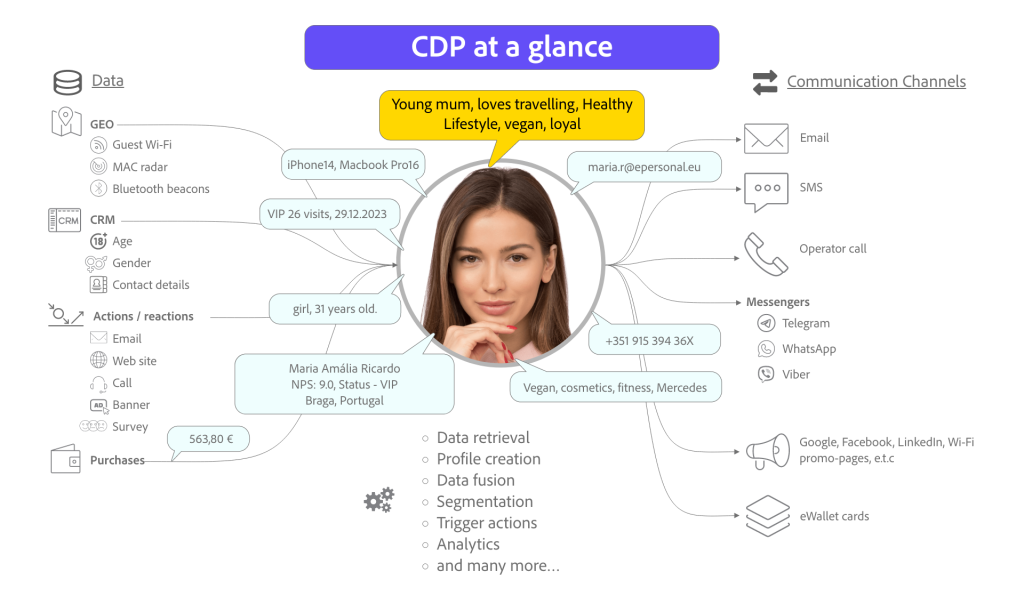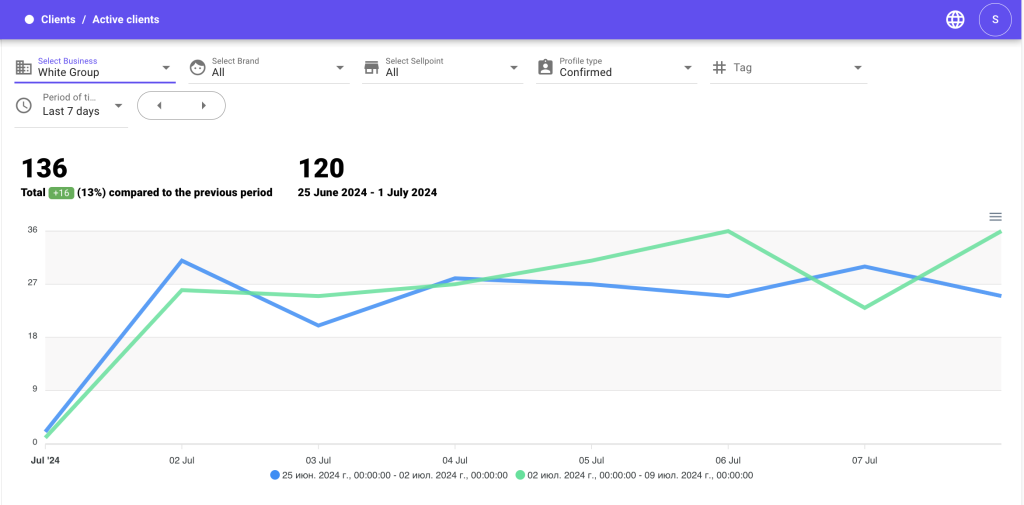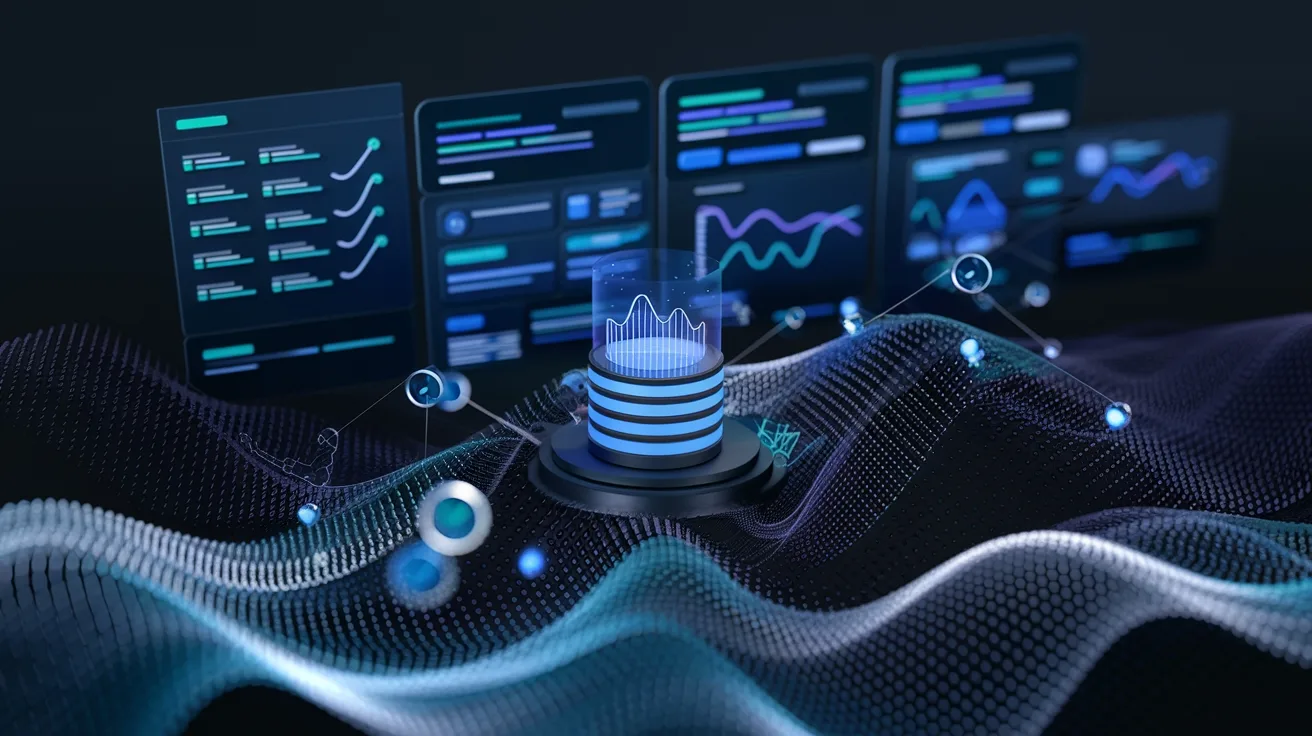Why does a business need a CDP?
Together with Andrew Sorokin we reflected on CDP and its necessity.
Why does a business need a CDP?
Introduction
Today there is a growing interest in Customer Data Platform (CDP) solutions. They are being implemented not only by large corporations but also by medium and small businesses. In this article, we will briefly review the key points of CDP implementation for any company with a customer base of 5 000 profiles or more.
What is CDP?
Customer Data Platform (CDP) is a centralized system that aggregates customer data from various sources, be it external data sources such as free Wi-Fi networks, GEO data, Bluetooth beacons, etc., or internal data sources such as data from CRM system, loyalty programs, cash register system data or activity on the company’s website or mobile app. CDP is a powerful tool for continuous monitoring of customer assets and provides businesses with the most objective view of the results of interactions with customers. The reliability and breadth of analytical data that a business receives from CDP allows the business to improve marketing strategy, increase the effectiveness of communications, and optimize marketing costs without losing efficiency.

1) Integration of data from many sources
Key business benefits of CDP
CDP integrates data from a large number of customer touch points, providing a holistic understanding of customer behavior and preferences. This enables businesses to better manage the customer lifecycle and improve customer satisfaction.
Technology integration with data sources includes:
🟢 Guest WiFi: Collecting data on customers using the guest network to analyze their behavior and preferences.
🟢 MAC Radar: Tracking devices via MAC addresses to understand client movements.
🟢 Bluetooth Beacons: Utilize Bluetooth beacons to capture data about customer movements and interactions at physical locations.
🟢 JS on Website: Integrate with JavaScript on websites to track customer behavior online.
🟢 Telephony: Collect data from phone systems to analyze customer interactions through calls.
🟢 Loyalty Program: Integration with loyalty programs to capture information about loyal customers’ purchases and preferences.
🟢 Mobile App: Integration with the Business mobile app to create a profile of Customer behavior based on GEO data and interaction history.
🟢 CRM: The Business’s existing CRM system can be a good source of data for the CDP at the start of implementation and in the process.
2) Customer Base Monitoring and Revenue Forecasting
Key business benefits of CDP
CDP provides continuous tracking of the status of the customer base, which allows you to quickly identify problems, areas of sustainable business performance, areas of potential growth, and forecast future revenues. All of this is extremely important for strategic planning and management of company resources.
CDP includes basic analytical reports such as:
🟠 New Customers: Reports on the number and characteristics of new customers for a specific period.
🟠 Active Customers: The report shows the structure, active for the period, of the customer base from the most engaged and loyal customers to customers with minimal activity.
🟠 Customers at risk (churn): Reports to help identify customer segments that may stop interacting with the company.
🟠 Frequency Reports: Statistics on how often customers purchase or interact with the business.
🟠 And a number of other standard reports

3) Monitoring and analyzing marketing investments (ROMI)
Key business benefits of CDP
- CDP gives managers the ability to track key metrics and results of marketing communications in real time, react quickly to changing trends, analyze return on investment (ROMI), and make informed decisions.
4) Customer segmentation and marketing communications through various channels
Key business benefits of CDP
- CDP allows you to effectively segment your customer base to create personalized marketing campaigns. This helps to optimize advertising spend and increase return on marketing investment (ROMI).
- Depending on the available channels, you can create different campaigns, measure their effectiveness and make decisions based on objective data rather than emotions.
- The main channels applicable for customer communications include:
🟡 SMS: Quick and direct messages for instant interaction.
🟡 Email: Newsletters with details, promotions and news.
🟡 Operator Call via Call Center: Personalized calls to discuss offers and support in detail.
🟡 Media advertising in promotional or social media: Broad reach to target audience through visual and contextual ads.
Conclusion
CDP is a powerful tool for continuous monitoring of customer asset health and provides businesses with the most objective view of the outcome of customer interactions.
The reliability and breadth of analytical data that a business receives from CDP allows it to:
- Improve marketing strategy.
- Improve the effectiveness of communications.
- Optimize marketing spend without losing efficiency.
CDP implementation provides businesses with significant advantages over classic CRM systems: improved forecasting accuracy, increased efficiency of marketing campaigns and improved customer interaction.
CDP helps companies make informed decisions based on verified data, providing continuous monitoring and analysis of marketing investments. This makes CDP an important tool for business sustainability and growth.
If you feel your Business needs a CDP, I have a win-win proposition with zero risk.
Please Email me.

